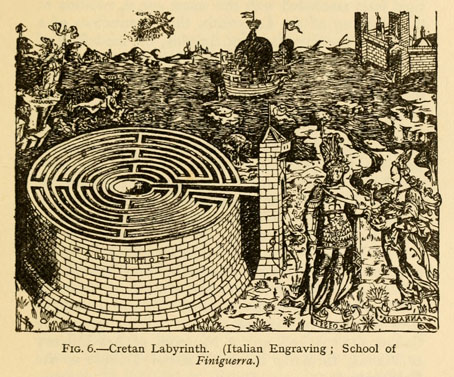
This book, Mazes and Labyrinths: A General Account of their History and Developments (1922) by William Henry Matthews, would have been very useful a couple of years ago when I was working on the cover design for Mike Shevdon’s The Road to Bedlam and required a labyrinth diagram. The one I used, a plan of Julian’s Bower in Alkborough, Lincolnshire, can be found below. I’ve had a lifelong interest in mazes and labyrinths so this book is fascinating beyond any temporary work requirements. Matthews’ study of the form features many diagrams going back to the legendary Cretan labyrinth and the constructions of the Ancient Egyptians. Closer to home there are depictions of the designs which flourished during the great era of landscape gardening in the 18th century, and photographs of some of Britain’s remaining turf mazes. The book may be browsed here or downloaded here.
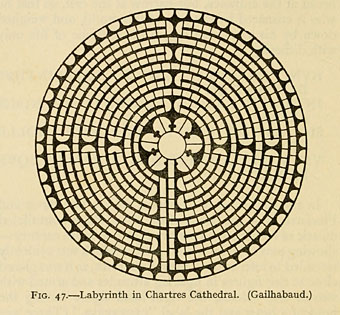
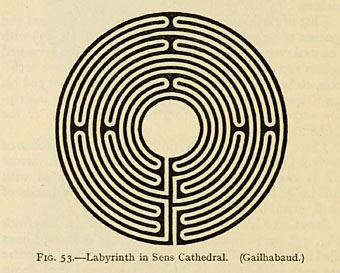
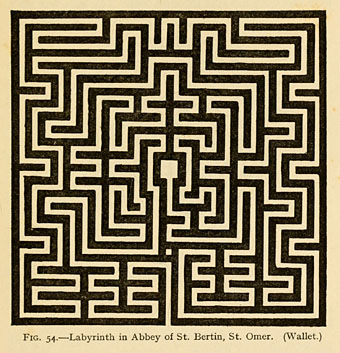
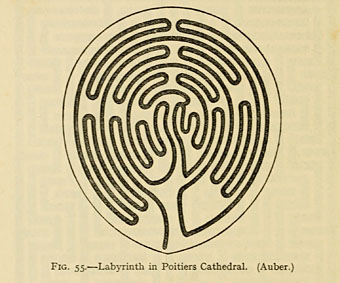
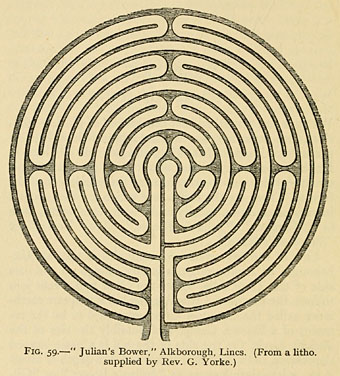
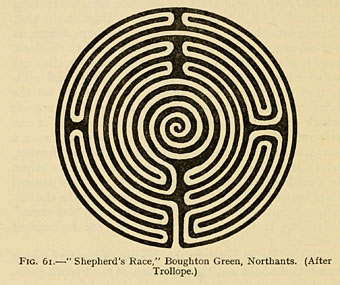
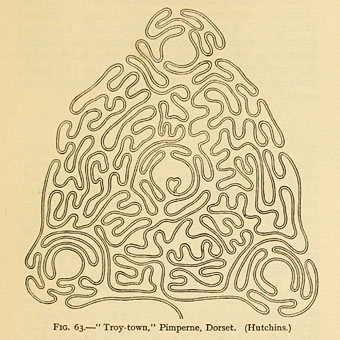
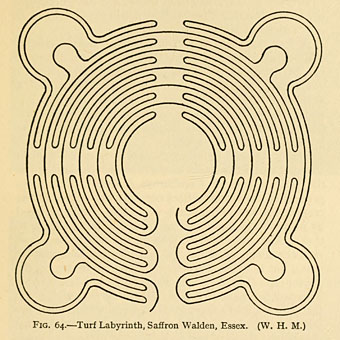
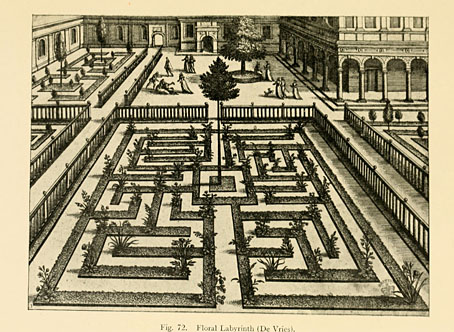
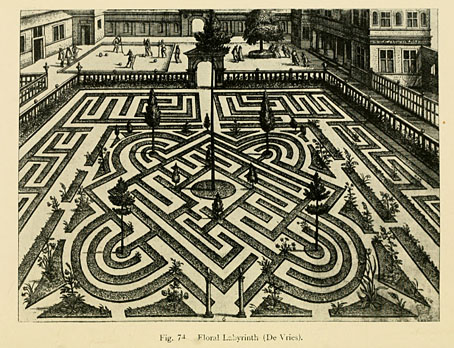
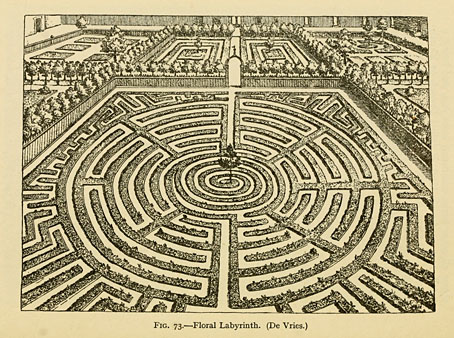
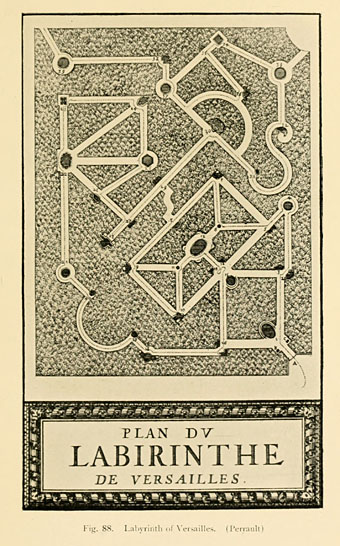
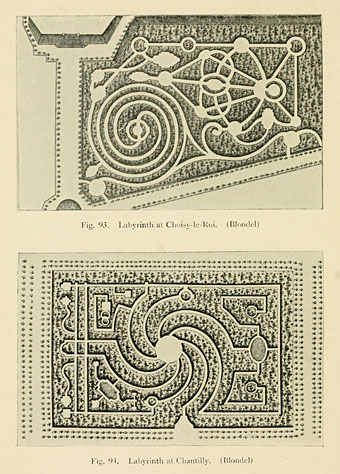
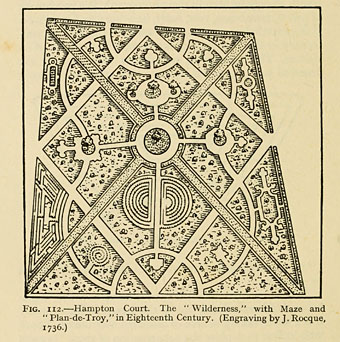
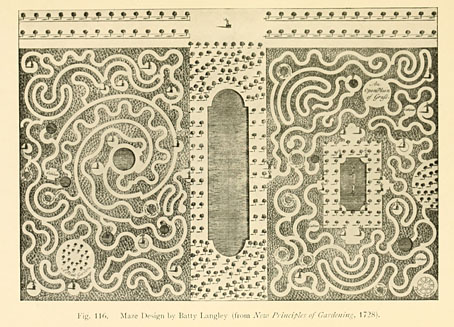
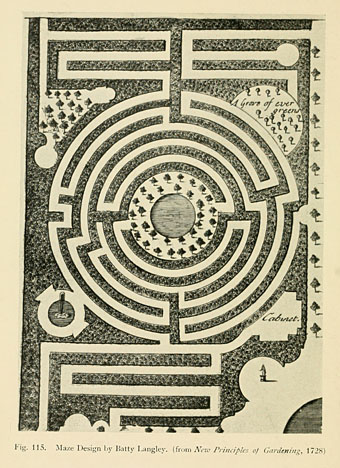
Previously on { feuilleton }
• Labyrinths
• Jeppe Hein’s mirror labyrinth

There’s an excellent annual journal, Caerdroia, devoted to mazes and labyrinths, John:
http://www.labyrinthos.net/caerdroia.html
Turf mazes are still a bit mysterious. We don’t really know why they were made, though there are theories. The one at Alkborough, Lincs, is well worth a visit
Mark
This book is the one reprinted by Dover in 1970 or thereabouts?
And speaking of mirror mazes (as in your link to an earlier Jeppe Hein post), Ken Lum’s maze installed at the Vancouver Art Gallery a year or so ago was rather fun. Though disappointing if one were expecting a display of reflective corn husks.
http://4.bp.blogspot.com/-TjEhwQBT8B4/Th9dYmCkrJI/AAAAAAAACRg/LnIKqQq0O_I/s1600/mirrors.JPG
Hi Mark. I actually linked to that site in an earlier post about labyrinths!
http://www.johncoulthart.com/feuilleton/2011/09/23/labyrinths/
herr doktor bimler: I’ve never seen the Dover book but the book where I found the plan of Julian’s Bower had illustrations which were exact replicas of the ones here, so they’d either taken them from this edition or from a later reprint. One fascinating thing about looking through these book scans is seeing the origin of illustrations you know from their reprints, Dover publications included.
I’d love to see Jeppe Hein’s maze. There’s something very strange about the presence of mirrors outside an urban environment, they seem to acquire an additional mystique. One of the early Hipgnosis album covers–forget which one–placed a large mirror in a field (after a few attempts, they kept breaking them); nice idea although more perhaps could have been done with it.
I am a greedy person and now I want a Feuilleton post about the labyrinth in M.R. James’ “Mr. Humphries and His Inheritance”. Apparently there was an ITV adaptation, of which no-one seems to think very highly.
A while ago I came across the suggestion that the underlying inspiration for the story was James’ knowledge of obscure Gnostic sects.
And here’s an essay drawing a connection to the invisible glass labyrinth that features in a H. P. Lovecraft fiction (one of HPL’s ghost-writing collaboration, IIRC).
I don’t remember the James story well enough so I’d have to re-read it first. Since I’ve been thinking about this subject on and off over the past week (having recently watched The Ninth Gate which includes a maze in its illustrations) now seems a good time.
James’ scholarly pursuits informed much of his fiction so that doesn’t surprise me, it’s one of the things which gives his work its authority. I have a nice guide to abbeys in the south of England that he wrote for the Great Western Railway; looking through that it’s easy to imagine him prowling around these places like one of his own characters.
Oh, and you may like to know that Mr Valentine in the first comment is a friend of Rosemary Pardoe!
Of course Borges comes into it to (House of Asterion; “Dead in his Labyrinth”; “Forking Paths”). And like James, Borges knew of the Cainite gnostic sect that features in Pardoe & Nicholl’s essay — he mentions it in ‘The Sect of the Thirty’. It all comes together.
Mr Valentine in the first comment is a friend of Rosemary Pardoe!
We are not worthy!
Turf mazes are still a bit mysterious. We don’t really know why they were made, though there are theories.
I cling to the “Shortcut to Amber” theory (Zelazny, 1970).
A 1621 labyrinth, courtesy of Frances Yates.
I re-read the James story. Not sure why I didn’t remember it so well, the idea of the maze is a good one. It does, however, fall into Borges’ category of things where the solution to the mystery is inferior to the mystery itself. It’s one reason why I prefer Robert Aickman’s stories over the more traditional ghost school, or the weird and monstrous that you get in Lovecraft and Clark Ashton Smith, there’s more imagination at work.